The lure of Palm Springs
Palm Springs and its unique desert setting continue to beckon holidaymakers and design enthusiasts alike.
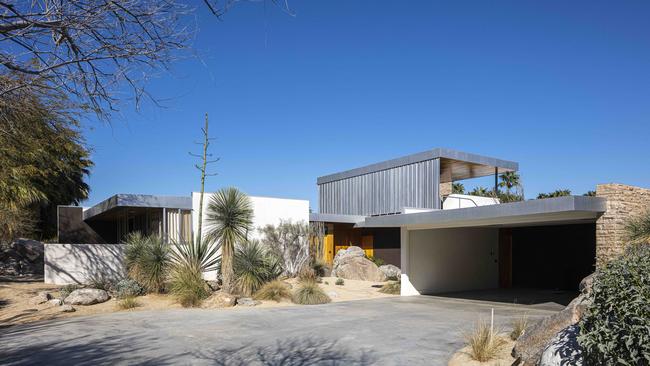
Frank Sinatra wasn’t the first Hollywood star to call Palm Springs home, but he was the one who truly put the California desert town on the map. In the late spring of 1947, just as his movie career was in full swing, Sinatra arrived in Palm Springs looking to build his dream weekender. Architect E. Stewart Williams, originally from Dayton, Ohio, had recently joined his father and brother in the Palm Springs architectural practice of Williams, Williams and Williams when Sinatra walked into their offices one day wearing a sailor’s hat and eating an ice cream and said, “I wanna house, and I want it by Christmas.”
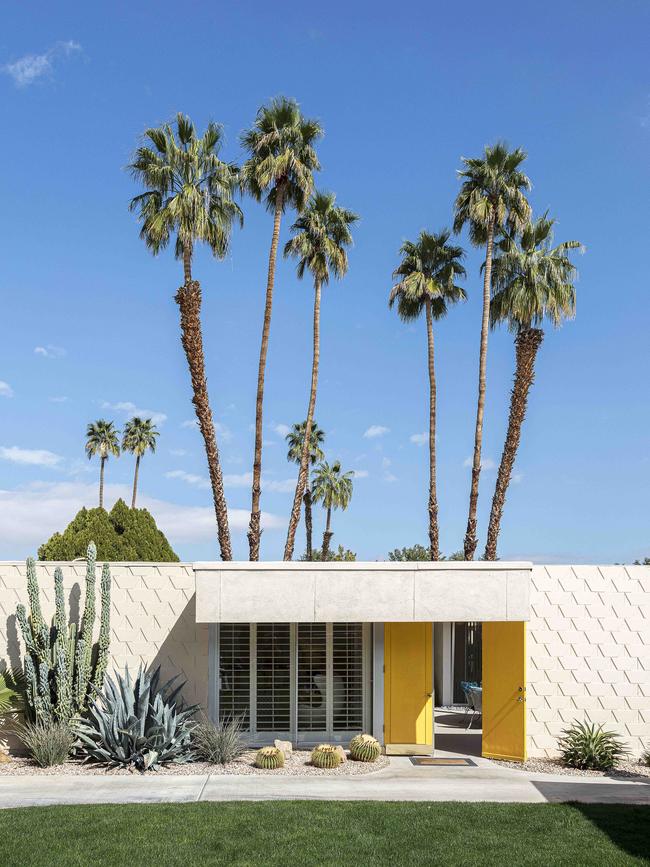
It was E. Stewart Williams’ first residential commission, but what Sinatra wanted was a grand Georgian-style mansion, which wasn’t what the modernist architect was interested in designing.
Williams, who was 38 at the time, didn’t want to upset his famous new client, but equally he wanted to follow his architectural instincts. He presented Sinatra with a house design that was aeons away from Georgian in style. What he proposed was a structure with long horizontal lines and made from materials not traditionally used in a residential building, such as steel and aluminium. It had floor-to-ceiling windows and a flat roof, and blurred the line between the inside and outside living spaces. Its construction just missed the Christmas deadline but Sinatra was able to ring in the New Year at his new abode, known as Twin Palms.
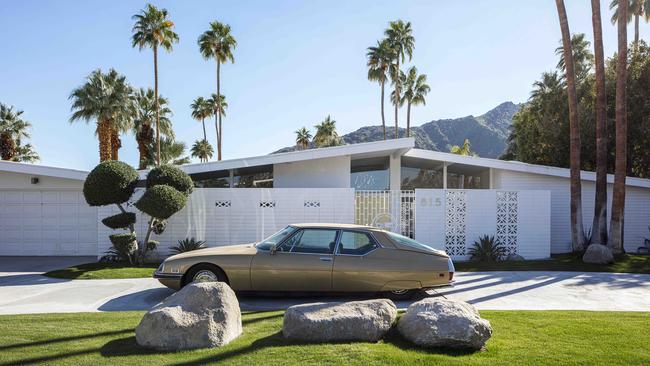
It was by no means the first house to be built in Palm Springs in what has become known as the Desert Modernism style; architects such as Richard Neutra, Albert Frey and William F. Cody had been experimenting with the concept there for several years. But this house shot the style to international fame and gave it some Hollywood glamour. Many of Sinatra’s celebrity pals soon bought or built houses nearby, and the neighbourhood around Twin Palms is now known as the Movie Colony.
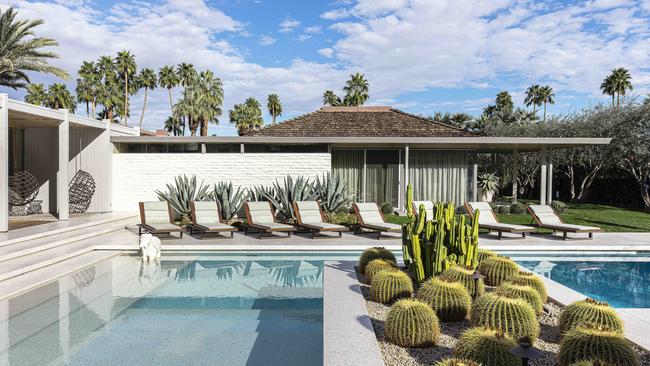
Today, the Twin Palms house is available for holiday and event rentals, and can also be visited during Modernism Week each February. Now in its 14th year, Palm Springs Modernism Week is attracting design enthusiasts from all over the world who are eager to discover this unique centre of modernist architecture for themselves. This year it drew more than 152,000 people, a 20 per cent increase on the previous year, with more than 370 events, including talks, exhibitions and house tours.
Events such as this, as well as the Coachella music festival and the Palm Springs Film Festival, are putting pressure on the city’s accommodation stock and have led to a boom in new hotel developments in the downtown area. However, visiting many areas of the city is still like stepping into world that time forgot.
Palm Springs is essentially a holiday town. Located 170km east of Los Angeles, it has a permanent population of just under 50,000 people. In the winter months, however, that number triples as temporary residents – many of them retirees – escape the cold. The second-home nature of Palm Springs is a primary factor in the development of the ground-breaking architectural style the area become known for, with architects being granted more leeway than they would be given to design a permanent family home.
At the beginning of the 20th century, the resort town was popular among tourists with respiratory illnesses that required them to spend time in a warm, dry climate with little humidity. But despite being very hot in summer, and with an average of 300 days of sunshine per year, Palm Springs also managed to enchant plenty of permanent residents.
One of them was the Swiss-born architect Albert Frey, who had worked in France with Le Corbusier. Frey’s Tramway Gas Station, designed in 1965, is now the Palm Springs Visitor Center, which greets people as they enter the town just off the main highway from Los Angeles. However, it’s Frey’s own house – known as Frey House II as it was the second house he designed for himself in Palm Springs – that is a must-visit.
Frey bequeathed the house, designed in 1964, and its contents to the Palm Springs Museum of Art and it is one of the few modernist homes in the area that have been preserved exactly as the original owner intended. The compact house was constructed of modern materials such as steel and glass mixed with local stone, and built into the hillside overlooking the town. Frey designed it to have as little impact on the environment as possible and was the first of the modernist architects building in Palm Springs to establish a dedicated practice in the desert town.
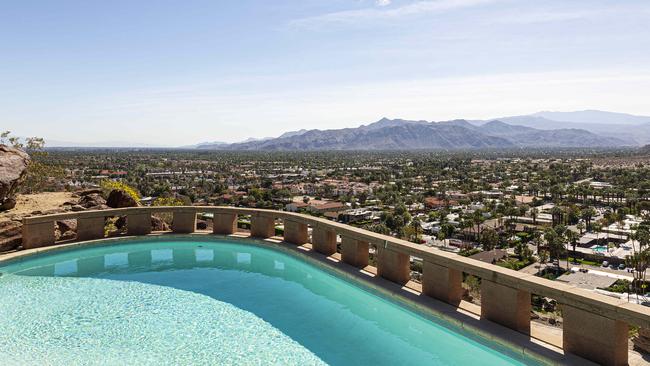
When luxury hotels started to appear in the area in the 1920s it began to attract Hollywood stars. According to the studio contracts of the time, they were not permitted to live or travel more than 120 miles away from Los Angeles when they were filming, so it was the perfect place for them to rest and relax away from the prying eyes of the paparazzi.
Developers and designers in Palm Springs favoured single-storey houses to ensure all residents had views of the spectacular San Jacinto mountains surrounding the town, but their low-rise design also had the effect of maintaining backyard privacy.
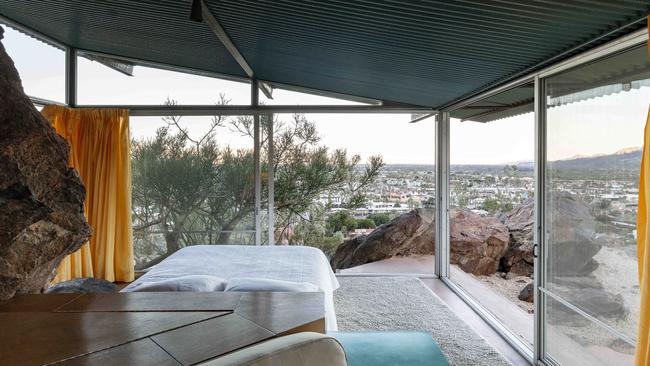
In 1946, Austrian-born architect Richard Neutra designed a house for the department store owner Edgar J. Kaufman as a vacation home away from his Pittsburgh residence. Neutra’s house, which is not open to the public during Modernism Week but can be easily seen from the street, is a rare two-storey example of Desert Modernism. It features slatted metal walls to create breezy indoor-outdoor spaces, large sliding glass doors that open onto patios and rooms that be transformed for different uses – what Neutra called “ready-for-anything” design. Together with another house owned by Kaufman, Frank Lloyd Wright’s Fallingwater, designed in 1935, it is considered one of the most important American houses of the 20th century.
-
WHEN THE GOING GETS TOUGH
People will tell you the drive from Los Angeles to Palm Springs is enjoyable, easy and picturesque. Don’t believe them. It’s two and a half hours of hellish stop-start highway traffic, followed by 30 minutes of rather spectacular desert scenery through windfarms, before you hit the turn off to Palm Springs. Perhaps in its Hollywood heyday the drive was a pleasant and relaxing two hours, but this writer has done it four times now – including once at 4.30am – and it is not a drive I’m eager to repeat anytime soon.

But this is California, and for better or worse, a car is a necessity for getting around. So for this trip to Palm Springs we decided to make the drive from LA as enjoyable as possible and instead of hiring a standard rental car, we borrowed a Mercedes-Benz G63 AMG SUV, which is about as far from a rental sedan as you can get. This is a car – if you can call it that because it’s built more like a tank – that means business from the moment you approach it.
The boxy, retro styling of the G63 is complemented by the door handles. While the
car has remote central locking – standard even in the most basic vehicle today – the doors need to be opened by pressing the release button on the front of the handle. It’s frustrating at times, especially when you have your hands full, but it’s a gentle reminder to undertake driving this car with caution.
The G63 AMG has a 4.0 litre twin-turbo petrol V8 430kW engine that makes a glorious gravelly baritone sound when you hit the ignition switch. Put your foot down and that delightful baritone transforms into a neighbourhood-rattling heavy metal band. The car can go from 0 to 100km/h in 4.5 seconds and is designed to be able to tow a whopping 3500kg load. That kind of power takes a little getting used to, but once you do it feels perfectly natural.
The Mercedes-Benz G-Class, sometimes referred to as the G-Wagen, was first offered to consumers in 1979 and was based on a special commission by the Shah of Iran for a military-style vehicle. The military styling remains, but the rest of the car is pure luxury SUV. It might look like a tank – and have doors that will give you a workout every time you close them – but it drives like a luxury sedan and has a leather-appointed interior and all the technology to match.
The G63 has a starting price of $247,000 and in many respects doesn’t make a lot of sense: it chews through petrol, for one thing. But it feels perfect for a city like LA, where the traffic can be horrendous and driving is essential. You might as well have a car that is fun to drive. After a week of taking this baby around Palm Springs and enjoying the stares from passersby we were almost excited about the three-hour drive back to Los Angeles.


To join the conversation, please log in. Don't have an account? Register
Join the conversation, you are commenting as Logout